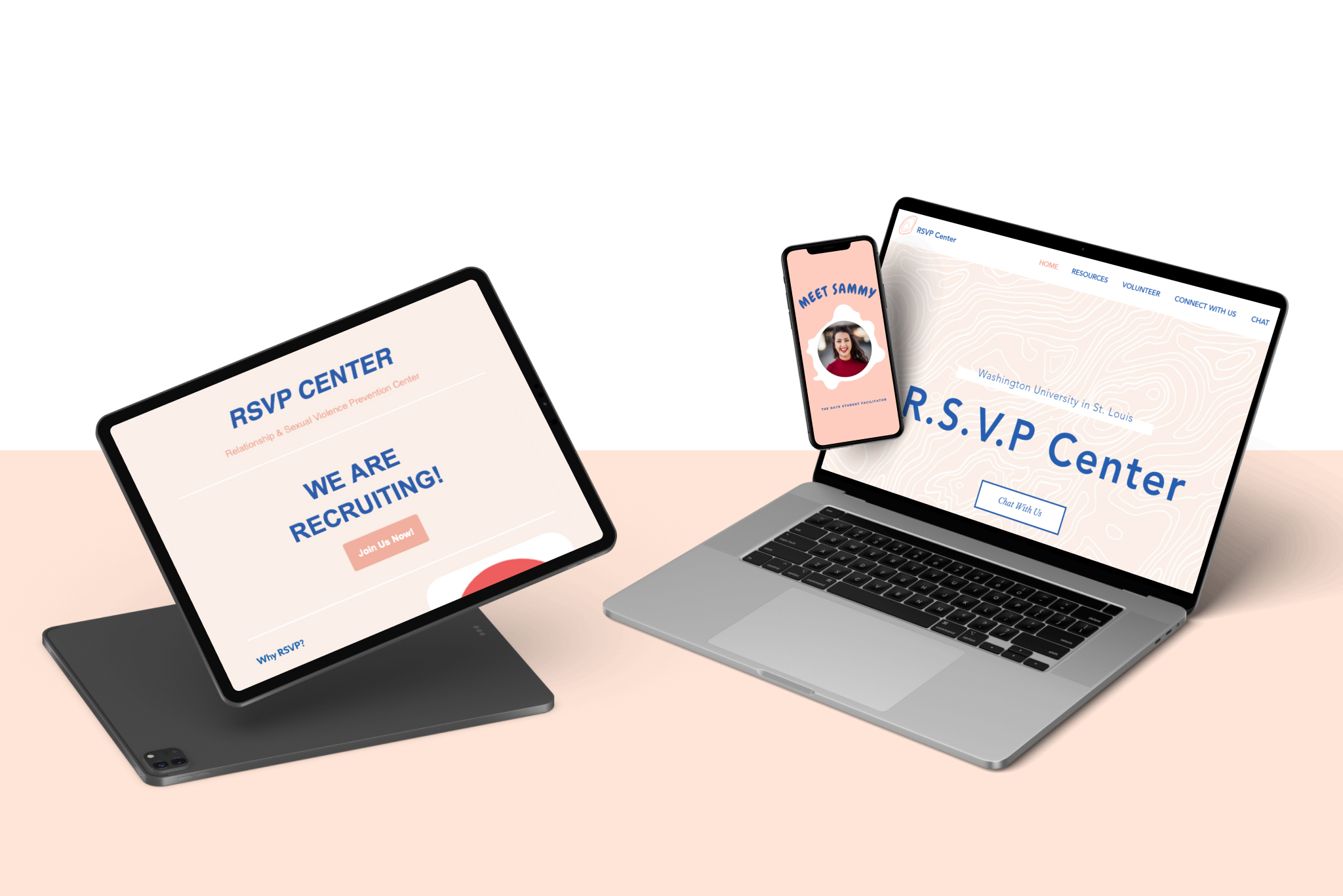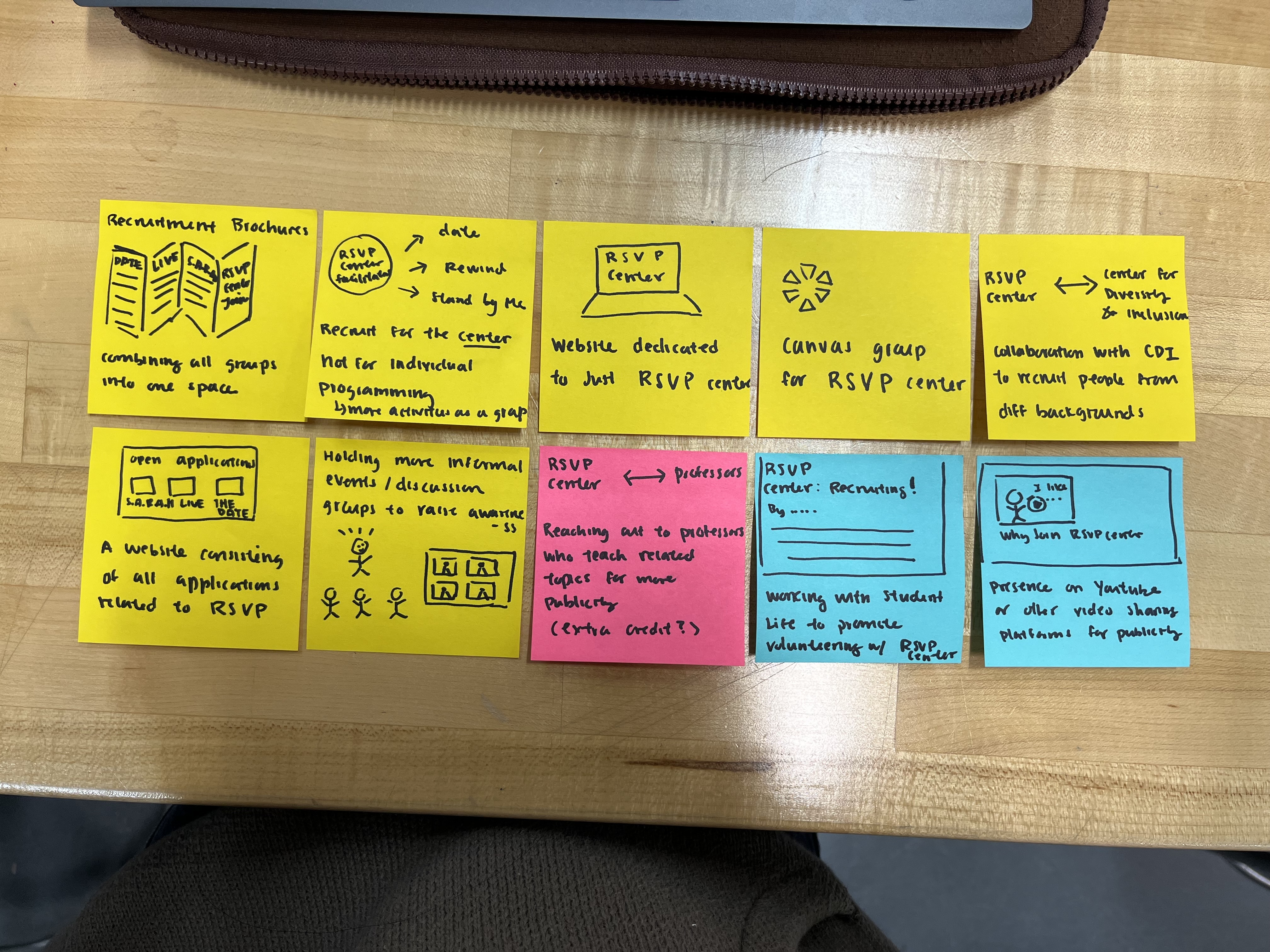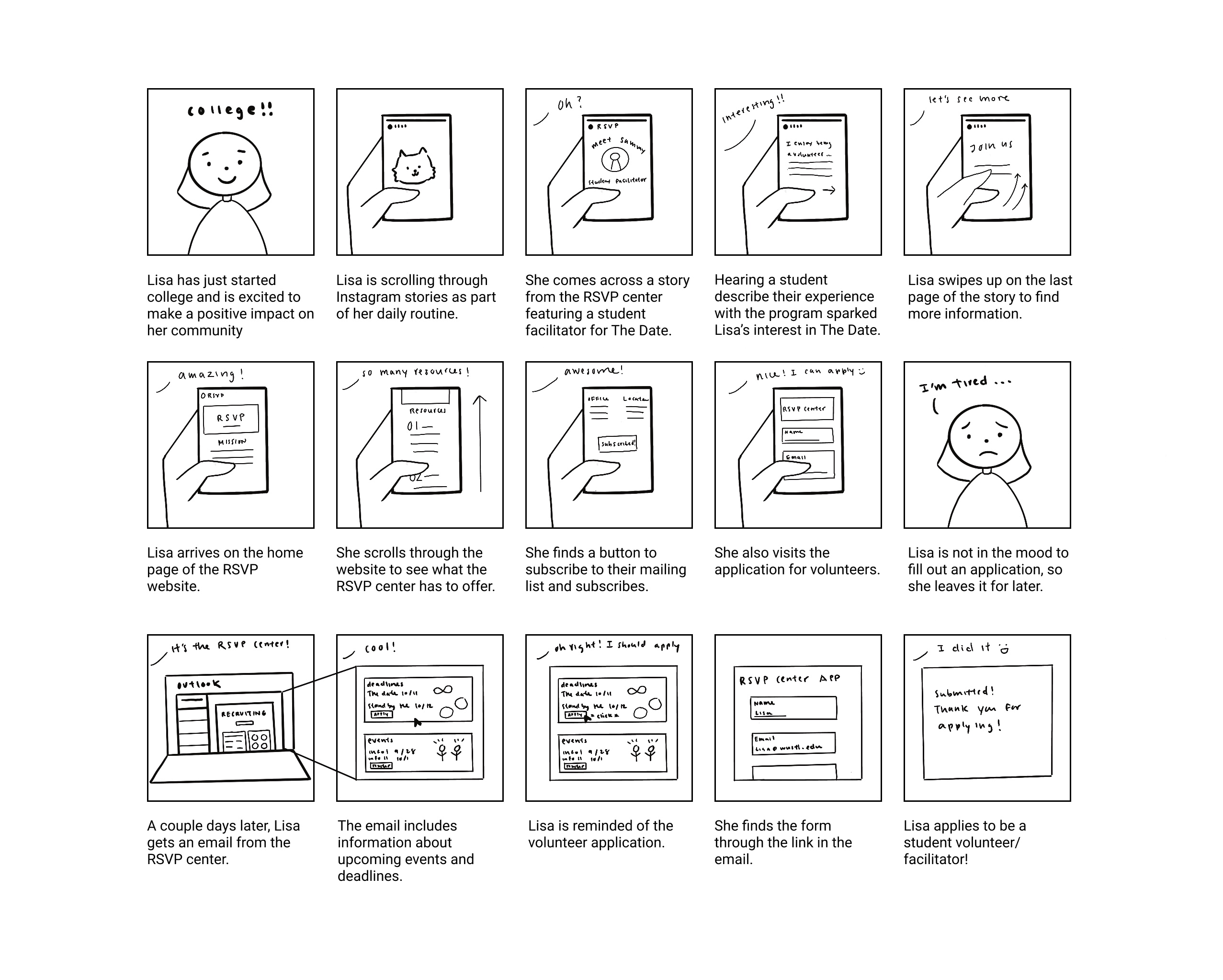
mockup from Figma Mockup Library
design > Relationship & Sexual Violence Prevention Case Study
Date: Dec 22, 2021
This project describes the design process of a design challenge to increase the number of student volunteers at the Relationship and Sexual Violence Prevention Center (RSVP) of Washington University in St. Louis. The RSVP center serves an important role on campus by promoting healthy relationships through evidence-based prevention programming that educates students on bystander intervention, violence prevention, and consent. Examples of such programming include The Date, Rewind, and S.A.R.A.H. This is a team project of four designers done as part of the course, Interaction Design: Understanding Health & Well-Being. All members were involved in every step of the process from discovery to prototyping.
How might we improve the process of being an RSVP volunteer student facilitator?
We conducted primary research through interviewing people with different levels of involvement with the RSVP center. We wanted to hear both student and staff voices regarding participation in RSVP. The main three groups of people are:
Depending on the people we are interviewing, we asked different sets of questions. Below are some of the questions we asked to the three groups of people:
For Non-Participants
For Participants
For Coordinators
To give us a better understanding of the problem scope, we also conducted secondary research through analyzing the websites and social media of student groups and programmes involved with the RSVP center and the RSVP centers of other higher education institutions.
Our Findings
First, we each gathered our top 20 insights from the interviews and printed them out on slips of paper. Each insight included a representative picture, an observation, and an interpretation. We assembled all insights on an affinity map to uncover any common themes.
Then, through the dot voting process where we each voted for the themes that stood out to us, we landed on the following key themes:
Using our research, we also created How Might We (HMW) statements to help direct us in our design process:
We wrote a positive goal statement to drive our project and created a visual framework to help us visualize the situation.
Positive goal statement
We want students who are interested in volunteering for the RSVP center to be able to find resources and opportunities that they offer.
Visual Framework

Using our HMW statements, we each brainstormed ideas on our own before presenting them to the entire group. Below are a couple ideas that were generated:

From the ideas we generated, we selected our top four and created wireframes and storyboards for them. We have wireframes for email publicity, website redesign, and video publicity. We have a storyboard for how the live information panel could run.
Email Publicity
Email publicity would help the RSVP center increase awareness on how to volunteer with them by delivering key dates and opportunities directly to student inboxes.
Website Redesign
By reorganizing the website, students who visit the website would have an easier time finding information and resources. It also helps the RSVP center centralize all applications to participate in programs under the RSVP center.
Video Publicity - Instagram Story
Currently, the RSVP center does not make use of videos to increase their presence on campus. By using instagram stories, they could reach a wider range of students.

Information Panel
An information panel would create a physical space for people to get to know the RSVP center. It would also allow a more personalized approach to publicity by providing students a chance to talk to current volunteers.

We conducted user tests with the concepts on undergraduate students by helping them set a scene, explaining to them each concept, and asking them how they would respond to the concept in that scene through open-ended questions. Below are our findings:
Email Publicity
Website Redesign
Video Publicity
Information Panel
After taking into account feedback from user testing, we settled on three main ideas: email publicity, website redesign, and video publicity. We decided to not move on with the live panel due to the lack of interest and engagement.
Once we have made necessary iterations to our remaining designs, we presented them to to the coordinators at the RSVP center and professional designers from outside the university.
For the coordinators, we wanted to gauge the feasibility of the solutions, scope out any reservations, and determine what stood out to them.
For the professional designers, we wanted feedback on the visual language of the solutions and the features presented by the solutions.
Below are the feedback from the client pin-up:
Using the feedback from our client pin-up, we made final iterations to our designs. We also created a storyboard to showcase the three solutions as a package working together.
Email Publicity
Key Features:
Website Redesign
Key Features:

Video Publicity - Instagram Story
Key Features:
Storyboard
